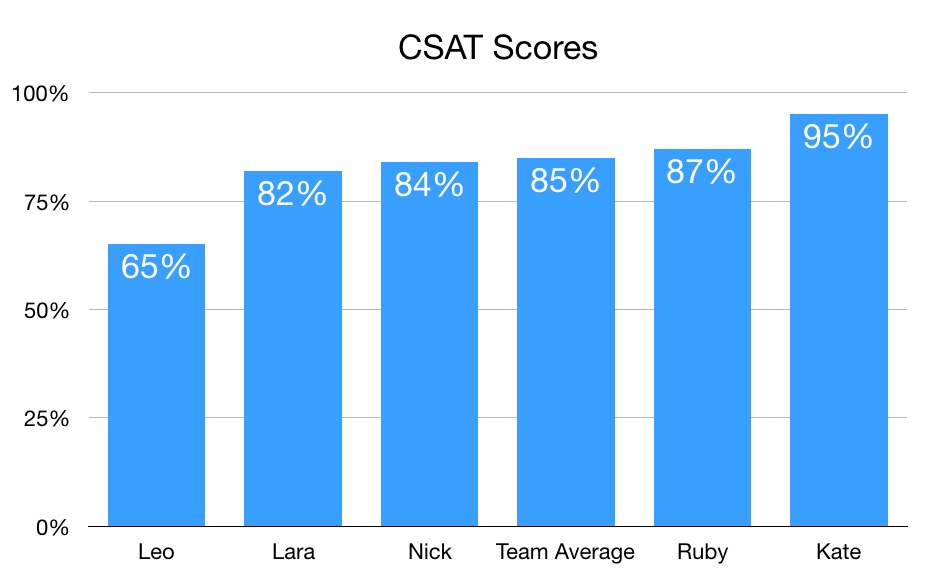Think about which employees you spend time with as a leader. For most, the priority order is fairly straightforward.
Under performers get the most attention.
Top performers garner the rewards and recognition.
Middle performers get the least attention.
This seems to make intuitive sense.
Under performers represent a top priority because they aren't doing their job correctly. It can take time and effort to find out why and help them improve.
Top performers deserve to be celebrated. We hope they will set a standard for other employees and we want to encourage our top performers to keep producing.
What if I told you we have our priorities all wrong? The key to your success actually lies in the middle! Here are two compelling reasons.
Reason #1: Variation
The chart below shows some sample customer satisfaction (CSAT) survey scores from a customer service team.
The CSAT average for the team is 85 percent. The challenge is your customer won't interact with "average." Your customer will be served by Kate, or Nick, or even Leo.
Leo looks like an obvious problem. But what about Nick?
On his own, Nick's CSAT average is right in the middle. He might even seem like a breath of fresh air to a customer who interacted with Leo the last time.
Now look at Nick in comparison to Kate. If a customer was wowed by Kate, they may be in for a letdown if Nick handles their next issue.
Inconsistency drives customers nuts.
Many leaders accidentally promote this variation. Kate gets recognize for her great performance. Meanwhile Nick gets largely ignored since he's doing about average.
Some leaders even initiate games and contests that encourage Kate to do even better, though sometimes at the expense of employees like Nick.
Reason #2: Untapped Potential
I recently facilitated a breakout session on employee empowerment at ICMI's Contact Center Expo and Conference in Orlando.
My session included a small demonstration. Two teams of three people each were asked to move three balls from one bag to another as quickly as possible. Here were the results of three rounds:
Team one was disqualified in round one because they only had two balls. (Side note: that's what happens when you don't give your employees the resources they need!)
You can see team one did a great job in round two, but there was also a high degree of variability between the teams. Part of this was because the teams naturally assumed they were competing against each other during the first two rounds.
We did something a little different for round three.
The teams were asked to come together and share best practices ahead of time. Rather than compete, we focused round three on both teams doing as well as they could. Round three not only yielded the best result, it was the most consistent between the two teams.
Let's go back to our customer service team.
What does Kate know that the rest of the team could benefit from? There's a good chance we can find some insight to move everyone higher.
In rare cases, we might learn that Kate is engaging in unethical activity that artificially inflates her survey scores. In one company, support agents were transferring angry customers to colleagues so they wouldn't risk getting a negative survey. Another company caught employees submitting fake surveys to artificially boost their scores.
Apply This Concept
Leading organizations are remarkably consistent. Customers know they can count on the same great service from location to location, or even from employee to employee.
That doesn't mean every person needs to be a clone who follows the same robotic script. It means that leaders should help their employees be equally good.
Here's how you can do it:
Look at the variation in performance between employees, teams, or locations.
Identify what the top performers are doing that others are not.
Share the the secret sauce with everyone else.






